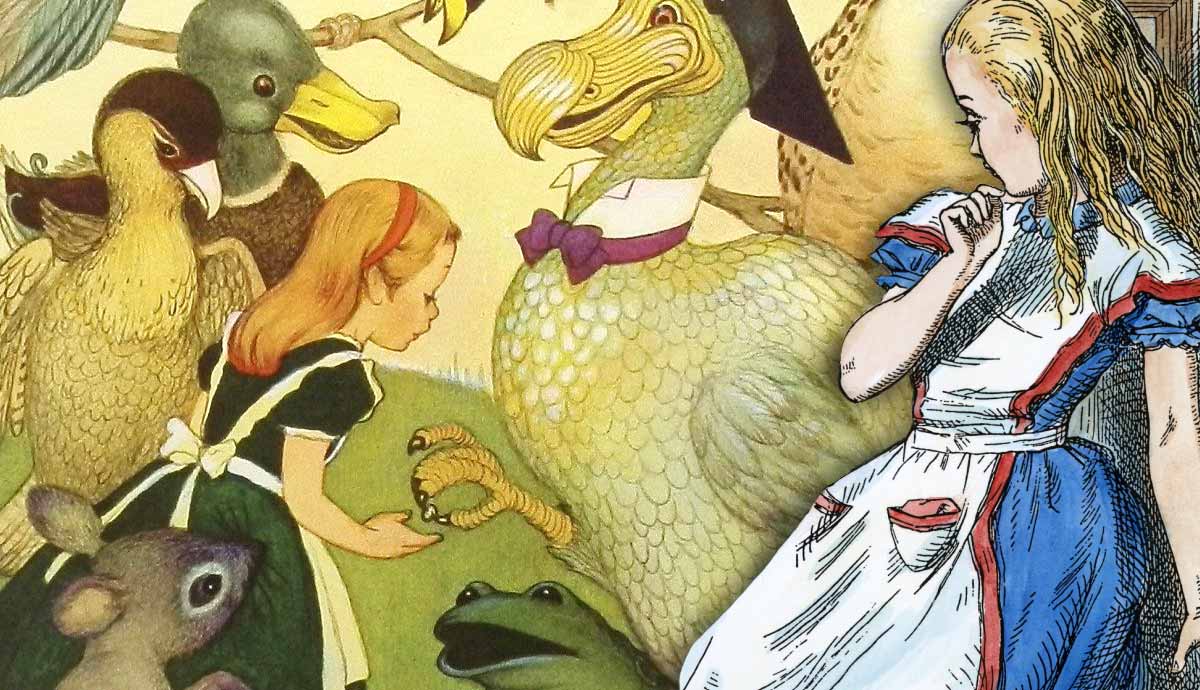
The much-loved Victorian classic novel Alice’s Adventures in Wonderland, 1865, by Lewis Carroll has fascinated audiences since its publication in the 19th century. Even today, the book continues to attract readers young and old, with its fantastical blend of fiction and allegory. Despite Carroll claiming that Alice’s stories “do not teach anything at all,” experts and novices alike have spent hours poring over the book’s colorful characters in search of deeper meaning and symbolism. But no character has attracted more attention than the titular heroine of Alice, who is drawn into a strange and surreal world that is ultimately derived from her own imagination. We take a closer look at some of the possible meanings behind the character of Alice.
The Role of Imagination During the Victorian Era

At the beginning of the story, Alice is a rather straight-laced girl from an upper-class English family. She expresses strong opinions and seems to have a sense of entitlement, which is largely down to her strict, rule-bound upbringing so far. But all this is disrupted as she descends deeper into the strange and surreal world of wonderland, where characters treat her with rudeness, disrespect or complete confusion. In shaking up her worldview Alice is able to gain a deeper understanding on what she is truly capable of. Many critics have therefore read Alice’s story as an analogy for what is truly possible when the rigid constraints of Victorian society are cast aside, and the powerful force of imagination and creativity can be allowed to roam free (see the Mad Hatter). In the story Alice realizes she must let go of her sense of world order, and surrender to the chaos that is wonderland.
The Transition from Youth to Adulthood

One of the most talked about themes in Alice in Wonderland is its exploration of the transition from the innocence of youth into the strange and confusing world of adolescence, which in turn leads towards adulthood. At the beginning of the story Alice sits in a picturesque garden, which many have compared to the Biblical Garden of Eden. As she is drawn down the rabbit hole, Alice leaves behind the innocence of her childhood and begins to gain a deeper understanding of the world, while letting go of her childish innocence along the way.

Throughout the story Alice experiences a series of disorientating experiences as she grows and shrinks in size. Sometimes she is too big, and other times she is too small, which we can relate to the sensations many young people and tweens experience when they feel too grown up for some things, and too young for others. We can also liken these surprising physical changes to the process of puberty. Alice also frequently feels muddled and confused by the riddles and conundrums of the story’s central characters, such as the Mad Hatter and the Cheshire Cat, which we can easily relate to a child’s interpretation of the adult world, which is still full of unknowns.
Curiosity About the World

Throughout Alice in Wonderland, Alice remains curious and adventurous, demonstrating her desire to know more about the world of wonderland that she has found herself in. She is willingly drawn into a series of strange, mind-bending experiences and her ability to remain open minded in wonderland allows her to develop strong skills in survival and self-sufficiency, and an ability to overcome forces of power such as the Queen of Hearts. Carroll therefore seems to suggest we can learn how to navigate tricky or demanding situations by learning from Alice’s open-minded and child-like sense of curiosity as it unfolds throughout the story.
The Creation of Life

Perhaps unsurprisingly, various Freudian innuendoes have been read into the story of Alice in Wonderland. She is a girl on the passageway to becoming a woman, so it seems likely there might have been some allusions to sexuality hidden within the story. Some have argued the story is filled with gynecological references, from the rabbit hole and the caterpillar to the locks and keys throughout the book. The literary scholar William Empson goes a stage further, likening the entire premise of the story to the creation of life. He describes how Alice is “a father in getting down the hole, a fetus at the bottom, and can only be born by becoming a mother and producing her own amniotic fluid.”










